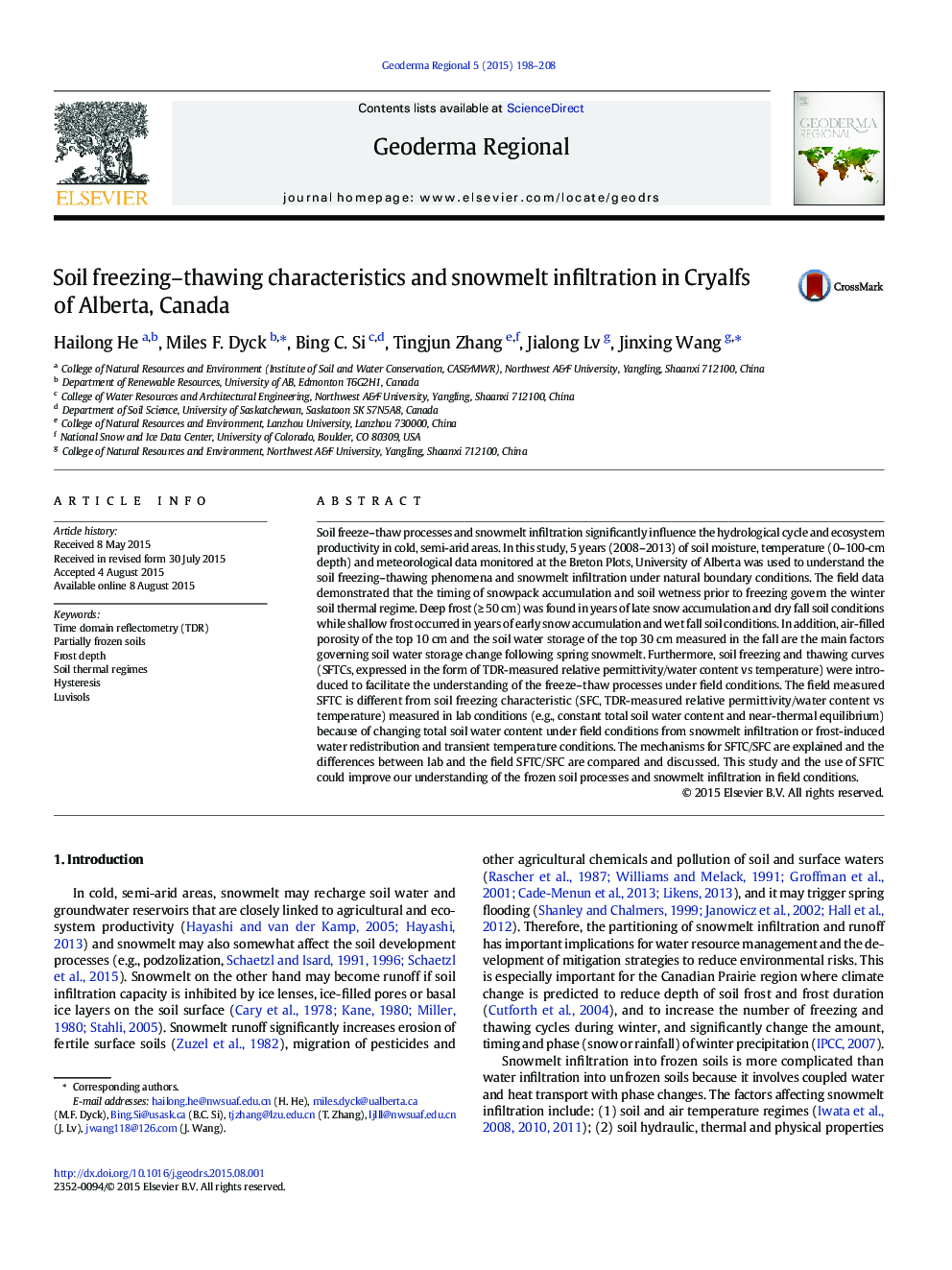| کد مقاله | کد نشریه | سال انتشار | مقاله انگلیسی | نسخه تمام متن |
|---|---|---|---|---|
| 6364145 | 1623010 | 2015 | 11 صفحه PDF | دانلود رایگان |

- Fall soil water content and the snowpack establishment time determine frost depth.
- Physics of different frost depths is described.
- Soil freezing characteristics can explain freeze-thaw processes and water movement.
- Air-filled porosity and fall storage govern spring soil water storage change.
Soil freeze-thaw processes and snowmelt infiltration significantly influence the hydrological cycle and ecosystem productivity in cold, semi-arid areas. In this study, 5 years (2008-2013) of soil moisture, temperature (0-100-cm depth) and meteorological data monitored at the Breton Plots, University of Alberta was used to understand the soil freezing-thawing phenomena and snowmelt infiltration under natural boundary conditions. The field data demonstrated that the timing of snowpack accumulation and soil wetness prior to freezing govern the winter soil thermal regime. Deep frost (â¥Â 50 cm) was found in years of late snow accumulation and dry fall soil conditions while shallow frost occurred in years of early snow accumulation and wet fall soil conditions. In addition, air-filled porosity of the top 10 cm and the soil water storage of the top 30 cm measured in the fall are the main factors governing soil water storage change following spring snowmelt. Furthermore, soil freezing and thawing curves (SFTCs, expressed in the form of TDR-measured relative permittivity/water content vs temperature) were introduced to facilitate the understanding of the freeze-thaw processes under field conditions. The field measured SFTC is different from soil freezing characteristic (SFC, TDR-measured relative permittivity/water content vs temperature) measured in lab conditions (e.g., constant total soil water content and near-thermal equilibrium) because of changing total soil water content under field conditions from snowmelt infiltration or frost-induced water redistribution and transient temperature conditions. The mechanisms for SFTC/SFC are explained and the differences between lab and the field SFTC/SFC are compared and discussed. This study and the use of SFTC could improve our understanding of the frozen soil processes and snowmelt infiltration in field conditions.
Journal: Geoderma Regional - Volume 5, August 2015, Pages 198-208